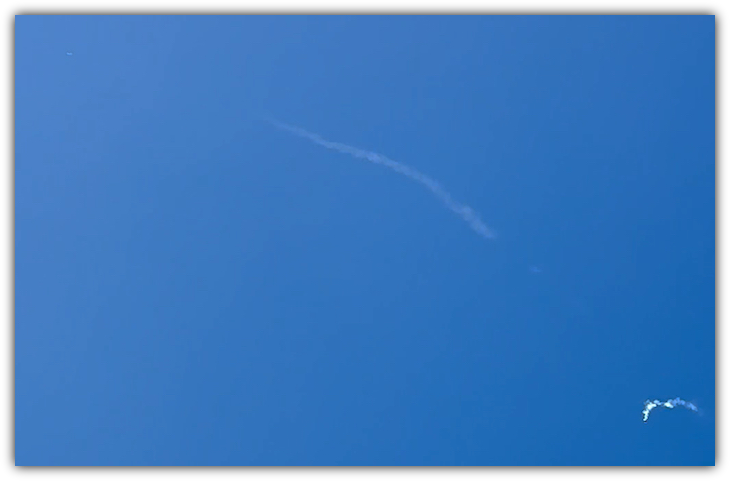Copyright © 1964-2025 Tripoli Pittsburgh, Tripoli Rocketry Association, Inc.

TRIPOLI Pittsburgh
Launch Report
October 6, 2024
Page 12
Flyers: 21
Flights: 35
TRIPOLI Pittsburgh legend Ken Good has been working on a motor feed staging system for a couple of years, er.... decades and brought out his HotSpur for a test flight in October.

Ken Good - HotSpur


Photo: Ernie Marsh
Photo: Ernie Marsh
Photo: Ernie Marsh
Ken had hoped to fly the HotSpur earlier in the day, but winds kept him grounded. He decided to load it up and give it a try in the afternoon.
"However the Hotspur did fly, at about 2:20 PM. It performed exactly per the design, so I was quite pleased.", Ken said.
According to Ken:
"The flight conditions were not optimal, with the wind really never diminishing. Given that, I put a judicious amount of angle into the launch rail - likely around 10 degrees or so. So I knowingly gave up an amount of apogee in the interests of not having the rocket float too far away in the recovery phase. In vertical simulations, for which I had little confidence, I was getting about 3,000 ft. That had to be regarded with suspicion, due to the ad hoc way one must massage engine profiles to simulate a two stage motor-feed-staging flight in Rocksim. Using a G80 motor for stage 1, and an F101 for stage 2, I thought about 2,000 ft vertical was more realistic. Thus, given the dialed-in launch angle plus some small amount of weathercocking, I was not surprised when after recovery, the altimeter beeped out 1490 ft. as the apogee."
For those unfamiliar with Ken's motor feed system, the booster is loaded with two motors stacked one on top of the other. The first stage motor ignites as per usual and once burnout occurs, the motor is ejected and the second motor slides into position and is ignited.




Ken Good's HotSpur lifts off on a G80 first stage motor from high power pad 6.
The HotSpur just as the G80 first stage burns out.
The first stage G80 motor ejects and the second stage F101 motor slides into position and ignites.
The HotSpur can just barely be seen in the upper left as the F101 second stage burns out.
According to Ken:
"Speaking of recovery, this was challenging, to say the least. Unfortunately, the capricious winds drifted the rocket into the heavily overgrown area over the hill to the left of the launch pads. While I had a good line of sight on it, as did Derek Baich, when we both trudged through the nasty weeds and briars for some considerable time, we couldn't locate it. Dave Rose was using his drone to search as well, but not having any luck. After walking out again to re-acquire my line of sight, Derek said he would take over the drone search, since he had a better idea than Dave where we had already searched. I resolved to call it a lost rocket after about another 20 minutes, but when I came out of the "wilderness" one more time, Derek greeted me with the news that he had located it, and the drone was hovering over it. We both hustled as quickly as possible to the spot - since the drone's battery was draining down to around 6% - and retrieved the rocket in good, undamaged condition.
In a final irony, the first stage sabot and motor, which had come down under its own small parachute, had landed apparently not far from the launch pads, in the cleared area to the right. But after an admittedly cursory search, I couldn't find it!. Likely I was a bit too spent to waste much time on it, and since it was really just comprised of a small length of phenolic tube with an aluminum centering ring, a cheap parachute and a spent single-use motor, I considered it a lost and relatively easily replaceable item. I alerted Joe Pscolka about it and what it was if anyone subsequently found it.
On Monday, I cleaned up the Hotspur, removed the Missileworks RRC3 altimeter, then reassembled it and put it up on a stand in my workshop. It is retired, now that the basic proof of concept design is proven.
It should be noted that as far as I am aware, this is only the second time (in history) a motor-feed staging rocket has successfully flown."
And it is the first ever motor feed staging rocket to fly at TRIPOLI Pittsburgh's Dragon's Fire Field!
Historic Flight!

Ken Good's HotSpur flight was so perfect that it landed neatly in his back yard.
Actually Ken staged this shot for us to see what the HotSpur looks like on the ground.
Thanks Ken!
Ken Good's HotSpur is a smaller version of a larger system that he has been working on for decades.
If you know Ken, give him a pat on the back for his efforts. And if you don't know Ken, go talk to him. He is a great guy and always willing to talk to new members (or anyone really!). And he'll be glad to tell you about his projects and flights.
And you can find out more about Ken Good in Mark Canepa's book about high power rocketry and the history of TRIPOLI. Mark's book should be considered required reading for ALL TRIPOLI members.
And thanks Ken for all of your time and hard work!

HotSpur

Goto:
Page 12